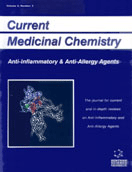Abstract
The inflammation associated with allergic disease is complex and still not completely understood. With the identification of the various cells and mediators involved in the inflammatory response, new therapies have been and are being developed for use. The central effector cell in allergic inflammation is termed the TH2 helper cell, a member of the subset CD4+ Tlymphocytes, which secrete specific cytokines such as IL-4, IL-5, IL-9 and IL-13. These cytokines promote mast cell differentiation and IgE production, and also promote eosinophil growth, maturation, migration and activation. In contrast, TH1 helper lymphocytes secrete IFN-γ (interferon- γ), and stimulate phagocyte-dependent cell-mediated immunity. TH1 cells can downregulate TH2 cells, primarily through the effects of IFN-γ. Controlling allergic disease focuses on blocking mediators and down-regulating pro-inflammatory cytokines and inflammatory cells stimulated by the allergic TH2 response. Antihistamines are receptor antagonists for the primary mediator histamine released during the early allergic response. Currently, glucocorticosteroids are the mainstay of antiinflammatory therapy because of their ability to inhibit the production of inflammatory cytokines. Much has been accomplished in creating newer forms of topical steroids with more potent anti-inflammatory effects and reduced side effects. The main focus of research is on developing therapeutic strategies which target different pathways to modify the allergic inflammatory response. For example, leukotriene modifiers are a relatively new class of anti-inflammatory medications that block the products of arachidonic acid metabolism. The use of recombinant humanized monoclonal antibody directed against IgE to neutralize and eliminate free circulating IgE is showing success in clinical trials. In development are monoclonal antibodies directed against various inflammatory cytokines such as IL-4 and IL-5, and a recombinant human receptor for IL-4. Another focus is to administer IL-12 in an attempt to inhibit the TH2 response and promote a TH1 immune response. There are strategies for modifying immunotherapy to improve immunogenicity and improve TH1 immune response. All of these novel concepts are examples of tremendous strides that have made in the development of anti-allergy therapy.
Keywords: Allergy, Cytokines, Neuropeptides, Histamine, Glucocorticoids, Leukotriene Modifiers, Intravenous Immunoglobulin
 4
4

